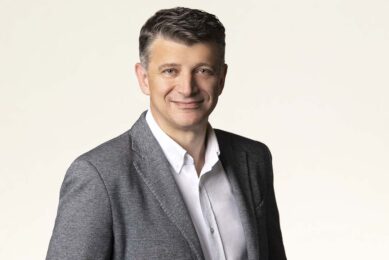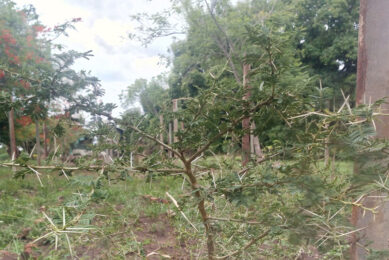Robotics revolution happening now

In the developed world it is becoming increasingly hard to source labour to do some of the less pleasant tasks on poultry farms, and some argue that a key way to improve welfare is to improve the amount of environmental monitoring that takes place on farm. Here, we review a project to develop a device, and consider some alternatives that are already on the market.
Robotics could offer poultry producers a way to reduce reliance on labour and improve environmental monitoring within sheds. Automated devices that patrol poultry units, keeping birds moving and measuring data at their level are becoming increasingly common. One such example is RoboChick, a modular device developed in partnership with universities and industry in the UK. The project, which has now undergone a trial on a commercial farm, aims to improve bird inspections, according to the Royal Veterinary College’s (RVC) Theo Demmers. He has been working on the project since its inception, and says that, while a stockman can inspect a flock of broilers, it is impossible for him to monitor individual birds. And in addition, modern farms use just a handful of sensors to monitor thousands of animals. “That was fine 20-30 years ago, but nowadays we have sheds with 55,000 birds and we’re still using three, maybe four temperature sensors at most, and maybe two humidity sensors. They are also not always down at bird level,” Mr Demmers says.
From concept to proof
So, a concept to build a device that can monitor birds constantly, at their level, without any disturbances was born. As the project developed more partners became involved and today a consortium that includes the RVC, Harper Adams University, commercial farming business Applied Poultry and robotics manufacturer Ross Robotics is working on the project. The result was RoboChick. After small on-farm trials to determine a basic design of a device that could monitor birds’ behaviour and environment without negatively effecting their behaviour.
The first trial was on a commercial farm with a simple device that had a cardboard shell allowing for easy modification. One early issue identified was that the birds were startled by the presence of the bot and moved well out of the way as it approached and left a long trail behind it. But a later trial at the RVC suggested that if a robot operated within birds’ environments from day one, the problems with startling disappeared, as they were used to its presence. In that trial, which replicated a commercial broiler unit on a smaller scale, Mr Demmers says that the chicks were curious about the robot, and “appeared to be imprinting on the robot”. So much so that the design was modified to prevent birds jumping up onto the device and riding it.
Farm trials
Following that first crop of birds reared within a university trial facility, a side-by-side study was designed in a commercial broiler shed. That’s where Applied Poultry, and its chief executive David Speller came in, offering two sheds – one which housed the latest RoboChick and one without, for comparison. Throughout that crop, the RoboChick device took two circuits of the trial shed each day, in a spiral route across the litter, and took two hours each time to do so. Compared with the control at the end of the crop a 2.9% increase in feed conversion was reported from the robot shed, and 18.7% fewer rejected birds, when compared with the control. Mr Speller says he felt it was bird movement that made the difference. “I think this improvement in FCR is due to improved uniformity. Pretty much every species has a way of being aggressive in a visual way, and I suspect broilers are the same.
Maybe the robot is just breaking up that dominance, allowing more birds to get food and water.” One would expect more activity and movement, would be bad for feed conversion, but the robot disturbance is actually allowing smaller birds to get feed and water. Speller: “We cannot replicate what the robot can do. It’s there all the time, appears less aggressive, they get used to it – it is a gentle stirring for the birds.” RoboChick is now looking for more partners to conduct further commercial trials further develop its design, with a view to launching commercially.
| Robots on the market Octopus Robotics: The Octopus Scarifier is from French robotics firm Octopus Robots. It is an autonomous machine designed to aerate poultry litter as well as monitor environmental measures such as shed temperature, humidity, ammonia levels and brightness. The company says that in scarifying litter, it can help reduce diseases like aspergillosis, pododermatitis, hock burn and breast injuries. The device operates automatically, and can run 24/7, with a charging unit located in the shed that it can return to when batteries are running low. Spoutnic: The Spoutnic is a smaller device than many others on the market and is designed to keep birds active in broiler breeder sheds, which encourages the use of nest boxes. The company says its small size makes it manoeuvrable around poultry sheds and it is able to tackle uneven litter. It automatically avoids objects, weighs in at 10kg and has an eight-hour battery. The machine has six speed settings, from slow to fast which can be selected depending on the training phase of the flock. It is made by the French firm Tibot. ChickenBoy: From Spanish firm Faromatics SL, the ChickenBoy takes a slightly different approach to automation. It is suspended from the ceiling in poultry sheds and monitors shed conditions from above. The device is suspended above birds and uses cameras and other sensors to measure visual issues like fallen stock or poor litter, can measure sound levels and other environmental variables like temperature, air speed or CO2. |
 Beheer
Beheer








 WP Admin
WP Admin  Bewerk bericht
Bewerk bericht